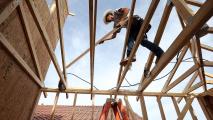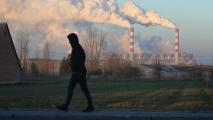With more people working from home, demand for office space is on the decline — so developers are converting the empty buildings into apartment units through “adaptive reuse.”
Home sweet home: To prevent the spread of COVID-19, millions of Americans started working from home in 2020.
Some have since gone back to the office, but the pandemic appears to have had a permanent impact on where we work — a recent survey of U.S. hiring managers found that 60% of companies expect to continue leaning more heavily on remote work in the years to come.
“The pandemic has proven that work from home is viable — it’s not going away.”
Jonathan Litt
The challenge: More remote work has meant less demand for commercial office space — since the beginning of 2020, the amount available for sublease has nearly doubled. If this office space remains unused, the impact on building owners, banks, and leasees could be huge.
“The pandemic has proven that work from home is viable — it’s not going away,” Jonathan Litt, chief investment officer of real estate investment firm Land & Buildings, told the New York Times in April.
“Businesses are going to adjust, and office real estate is going to take it on the chin during that adjustment period,” he continued.
An estimated 8,000 new apartment units will emerge from empty office spaces in 2021.
Adaptive reuse: There may not be a demand for office space right now, but there is a need for more housing, and by converting unused office buildings into apartments, developers can create units more quickly and cheaply than if they’d built them from scratch.
This repurposing of existing buildings is called “adaptive reuse,” and it resulted in the creation of 12,000 new apartment units in 2020.
If 2021 continues as expected, the year will see the addition of more than 20,000 new units through adaptive reuse— about 40% will be in former office buildings, while the rest will be in a mix of hotels, factories, and other commercial spaces.
For comparison, just over 5,000 new housing units were created through adaptive reuse in 2010.
The big picture: Local regulations such as zoning currently limit how much commercial real estate can be converted into housing. And while 20,000 new apartments is a big jump from a decade ago, the U.S. is still millions of homes short of where it needs to be.
To solve the housing shortage, we need to build new homes, restore old ones, and repurpose existing spaces.
Easing zoning to repurpose more buildings could help solve the glut of unused offices, as well as the shortage of housing. But we need to build more homes from scratch, too.
Progress on that front has been stifled by shortages of materials and workers, but 3D-printed homes are emerging as one possible solution to those issues, as they waste less material and require fewer workers.
Revitalizing aging neighborhoods can help, also — in Baltimore, the nonprofit group Parity is using a combination of donations and government subsidies to turn abandoned houses into livable, affordable homes.
Ultimately, we’re going to need to attack the U.S. housing shortage from all of these angles: restoring old units, building new ones, and repurposing existing structures.
We’d love to hear from you! If you have a comment about this article or if you have a tip for a future Freethink story, please email us at [email protected].






